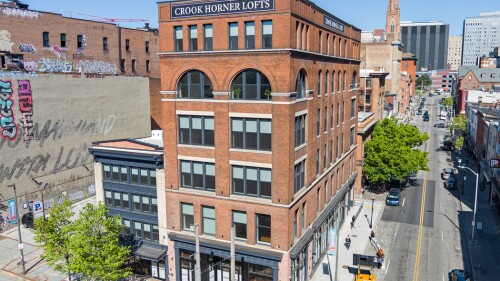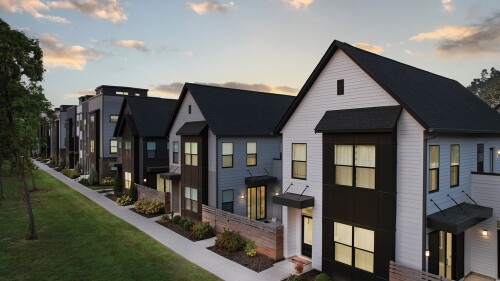Many Americans face significant community design–related barriers to living a healthy life, according to a new ULI report, America in 2015. A large number of people, particularly minorities and millennials, report living in areas that lack easy access to safe places for outdoor physical activity, active transportation systems such as bike lanes, and healthy food options.
Among the health related findings:
- Nearly four in ten people—38 percent—say that their communities lack outdoor places for recreation.
- Fifty-four percent say shopping and entertainment are not within walking distance.
- Forty-eight percent say bike lanes are insufficient to make biking a practical mode of transportation.
- Twenty-five percent say that traffic makes it unsafe to walk in their neighborhoods, and 21 percent say crime makes it unsafe to walk.
- Sixteen percent of Americans, including 18 percent of African Americans and 28 percent of Latinos, say that healthy food is not easily available in their communities.
America in 2015 is based on a nationwide survey of 1,201 adults conducted during January 2015. Survey responses are categorized by generation—millennials, generation X, baby boomers, war babies, and the silent generation—as well as by ethnicity, income, and location (large or medium cities, suburbs, rural or small towns). The responses are weighted to be representative of the U.S. population. The report builds on findings from America in 2013, published by ULI in May 2013.
Among the community attributes included in the survey, the quality of the environment, including air and water quality, is rated as a top priority or high priority by 87 percent of Americans. Access to fresh, healthy food is the top or high priority for 73 percent. Green space, including parks, is ranked as the top or high priority by more than 50 percent of Americans, and nearly the same percentage rate proximity to family and friends and walkable neighborhoods as top or high priorities.
Of the ethnic groups, African Americans and Latinos are far more likely than whites to lack access to healthy food, sufficient bike lanes, and outdoor space, and are more likely to experience traffic/crime impediments to walking. Of the generations, the millennials are most likely to lack access to healthy community attributes, and low-income people are more likely than moderate-to-high income people to lack access.
The disparity between what these groups want and what is available in terms of community features has presumably contributed to somewhat greater discontent with their quality of life than is expressed by Americans as a whole. Eighty-seven percent of Americans say they are somewhat or very satisfied with the quality of life in their communities. Eighty-four percent of African Americans and 83 percent of Latinos report being satisfied with the quality of life in their communities, compared to 88 percent of whites. Seventy-eight percent of low-income Americans are somewhat or very satisfied with their quality of life, compared to 91 percent of higher-income Americans. Eighty-three percent of millennials report being very or somewhat satisfied with their quality of life, compared to 87 percent of gen Xers, 88 percent of baby boomers, and 92 percent of the war babies/silent generation.
The survey highlights the important role social equity plays as a determinant of a community’s overall prosperity and livability, said ULI Global Chief Executive Officer Patrick L. Phillips. “Despite efforts over the past two decades by the private and public sectors to improve the overall livability of urban areas, the survey results suggest there is room for improvement in building for wellness,” Phillips said.
“While we’ve made progress in creating places that provide a higher quality of life, our work continues to evolve based on lessons learned from the past, as well as our ability to anticipate the future needs of those who live and work in our communities. Shortcomings in design and development that exist now present opportunities to reevaluate how to make our communities healthier for all residents, and more inclusive and successful as a result.”
In terms of community attributes specific to walkability and car use, half of Americans want to live in pedestrian-friendly neighborhoods, including sidewalks and crosswalks, and one-fifth view walkability as a top priority. Fifty-two percent would like to live in a place where they do not need to use a car very often; this includes 63 percent of millennials and 64 percent of renters. More than half of the residents of large cities say they would prefer not having to drive, as would a majority of African Americans and Latinos.
In terms of public transportation, the responses are more mixed: 44 percent of Americans consider convenient public transportation to be a low priority, while 32 percent consider it a high priority. Still, millennials, African Americans, and Latinos rate convenient transit as a far higher priority than the other groups, which is consistent with their responses on auto dependence.
The survey presents an optimistic outlook for housing, with homeownership continuing to be a popular goal for Americans. Seventy-three percent consider buying a home a good investment, and 72 percent of those who anticipate moving in the next five years expect to be homeowners. The expectation of owning in five years is highest among gen X (82 percent), followed by baby boomers (76 percent), millennials (69 percent), and war babies/silent generation (59 percent). Nearly half of Americans say they are either very likely or somewhat likely to move in five years. Not surprisingly, the largest percentage of those likely to move are millennials (72 percent), and the smallest percentage are war babies/silent generation (25 percent).
Among likely movers, 49 percent of the millennials and 51 percent of gen Xers expect their next home to be larger, while 73 percent of baby boomers and 83 percent of the war babies/silent generation expect their next homes to be smaller or the same size. Single-family detached homes are the preferred future housing choice for all generations, although the survey does reflect growing expectations that future housing will be either a duplex or townhouse, particularly for millennials.
Of the four generations included in the report, the millennials—the largest and most racially and ethnically diverse generation, and the one just starting to become fully immersed in the housing and jobs markets—will continue to have a profound impact on 21st century design and development, Phillips noted. “Gen Y’s preferences for a range of housing options, easy access to dining, shopping and recreation, and walkability are changing the growth patterns of suburbs as well as urban centers.”





